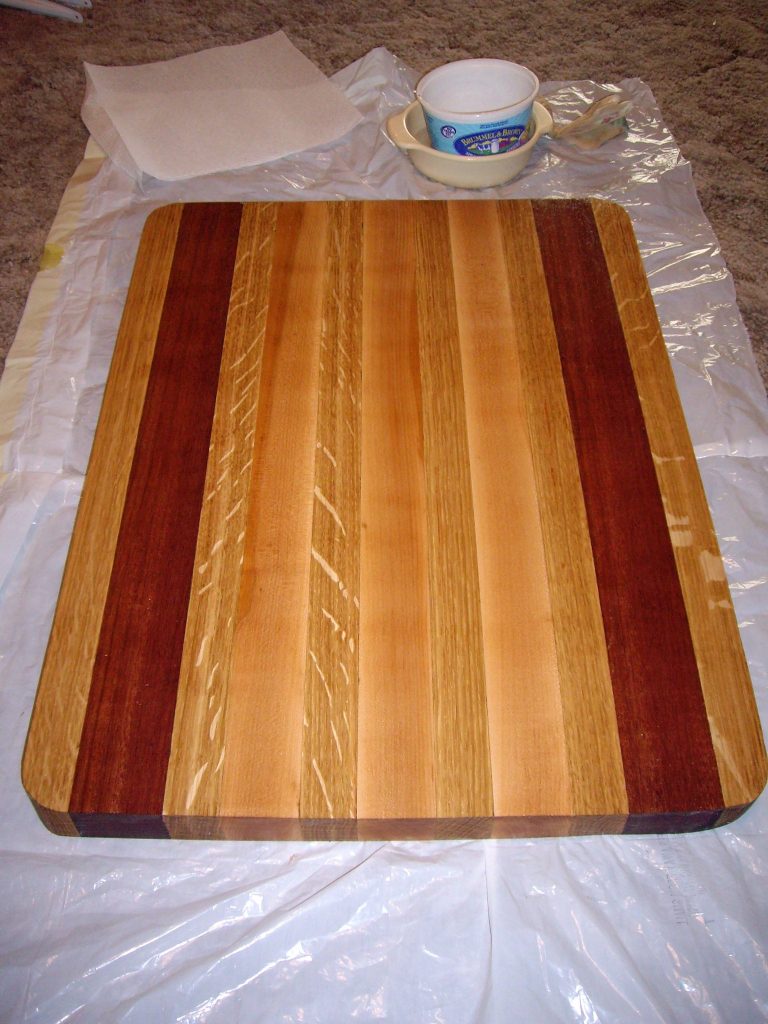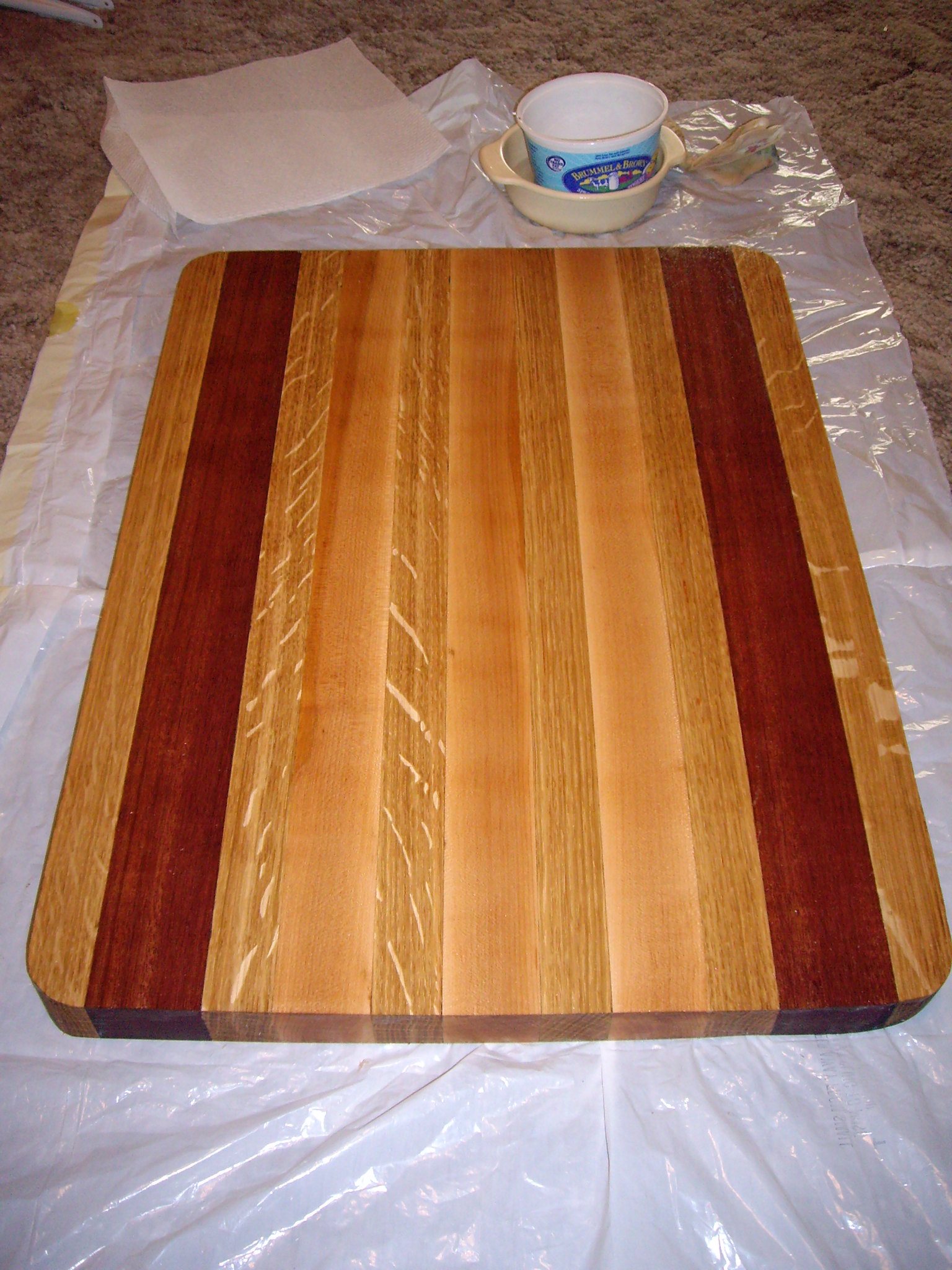There’s a lot of false information around about wood cutting boards, mostly due to restaurants not using them. This has led people to think that wood cutting boards are dangerous, mostly because they hold bacteria, which could contaminate food. But that’s not the truth. In actuality, wood cutting boards have some antibacterial capability, as the wood draws in moisture, keeping it away from bacteria. Since the bacteria need that moisture to survive, they die. Additionally, some types of wood have their own antibacterial capability, as part of that tree’s means of survival.
The real reason why restaurant kitchens avoid using wood cutting boards doesn’t really have anything to do with bacteria. Rather, those restaurants are trying to avoid the cutting boards absorbing meat juice and the odor from onions, fish and other foods that could affect other foods cut on the same cutting board. While fancy restaurants use separate cutting boards for these types of foods, not all restaurant kitchens are big enough to accommodate this.
Nevertheless, many chefs prefer wood and bamboo cutting boards, even while their staff might use polyethylene ones. Wood and bamboo are easier on knife blades and are easily cleaned. Bamboo is a natural antibacterial, eliminating the concerns that using it will promote the spread of bacteria in food.
Another important point that needs to be considered here is whether the food that is being prepared on the cutting board will be cooked or not. Bacteria die at 158°F, meaning that pretty much any cooking will kill it. So if the cutting board is being used for cutting pork, which is notorious for containing several different types of bacteria, it’s not a good idea to cut the vegetables for a salad on the same cutting board, until it has been cleaned.
Personally, I use two different cutting boards; one for meat and another for vegetables. That way, in any meal preparation, I can be sure that I’m cleaning the one that was used for meat, before using it for anything else. I usually use a HDPE plastic one for meat; not due to any concern about contamination; but because of concerns about meat juice staining the wood. My wood cutting board is reserved for cutting things that won’t stain it.
Cleaning a Wood Cutting Board
Any wood cutting board should be cleaned soon after using it. The longer that food particles sit on the wood, the more chance that they will stain it, as well as offering a chance for the food to solidify on the surface of the cutting board, making it hard to remove without damaging the wood.
To wash the cutting board, use warm water and dish soap. Stubborn food residue can readily be removed with an abrasive scrubbing pad, like a ScotchBrite pad. It’s perfectly safe to submerge a wood cutting board in water, but it shouldn’t be left there to soak. Wood readily soaks up water, unless the cutting board is sufficiently oiled to prevent it. That water can ultimately cause damage to the cutting board. However, if the cutting board is kept clean, there’s really no need to do more than run water over it while cleaning it.
Never put a wood cutting board in a dishash. The combination of harsh chemicals and heat will damage the cutting board, causing it to warp and/or crack. At the minimum, it will dry out the oil that the cutting board has been finished with, making it more susceptible to food juices and odors entering into the wood.
It’s a good idea to wipe the cutting board dry, after washing it. While a cutting board can air dry, often they do not dry well, mostly due to the proximity of dishes or pans that prevent the water from evaporating off the surface.
If the cutting board is being used for an extensive period of time, it can be useful to wipe it off from time to time with a damp dishcloth or sponge, removing excess food particles. This is especially important for foods like onions, which leave residue that can soak into the wood and affect other food being cut on that same cutting board.
Cleaning a cutting board and sanitizing it are not the same thing. While soap and water can be used to clean off wood particles, they may not remove bacteria. In order to ensure that the cutting board is cleansed of bacteria, use either straight white vinegar, 3% hydrogen peroxide (the normal solution sold in the store) or a light solution of bleach (1-1/2 tsp. in 4 cups of water).

Freshening a Wood Cutting Board
No matter how well a wood cutting board is cared for, there is always the chance that food odors will become entrapped in the wood fiber. This is a common problem; but fortunately one that is easily rectified.
Probably the best means of removing odors from a wood cutting board is with baking soda and lemon. Sprinkle the baking soda onto the surface of the cutting board, and then use a cut lemon to work the baking soda into the wood. Once it is worked all the way, the board should be rinsed with a sponge or washcloth and then hand dried.
If a cutting board has gotten to the point where it has soaked up food odors, there’s a good chance that it needs to be oiled. Oiling a wood cutting board protects it from not only food odors, but the liquids from those foods, which soak into the wood pores, imbedding their odor in the wood.
Keeping a Wood Cutting Board Oiled
An important part of maintaining any wood cutting board is keeping it oiled, something that many people forget. The oil in the wood helps protect it from water soaking in, as well as meat juice that can stain the wood and onion juice which can leave a continuing odor.
Mineral oil is considered to be the best oil for cutting boards. It can be applied to the edges with a rag; but for the cutting surface it is best to pour it on and then wipe it in with a clean rag. Be sure to oil the back side as well, so as to prevent the wood’s moist content from becoming uneven, with the potential of warping the cutting board.




